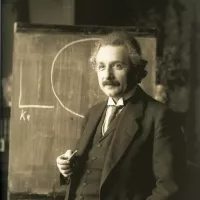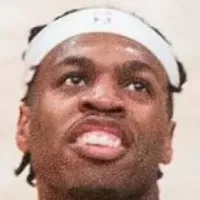In physics, a quantum represents the smallest possible unit of a physical entity involved in an interaction. It signifies a discrete quantity of energy directly proportional to the frequency of the radiation it represents. This concept of "quantization" implies that a physical property can only possess specific discrete values, which are integer multiples of one quantum. For instance, a photon constitutes a single quantum of light at a specific frequency. Similarly, the energy levels of electrons within an atom are quantized, restricting them to specific discrete values. This quantization is crucial for the stability of atoms and matter, as electrons are bound to these discrete energy levels. Quantization is a fundamental principle in quantum mechanics and plays a vital role in understanding the interactions of energy and matter in nature.
December 14, 1900: Planck's Quantization Hypothesis
On December 14, 1900, Max Planck presented his research on black-body radiation to the German Physical Society. He proposed that energy absorption and release occur in discrete packets, or "energy elements," to explain the color change of heated objects. This marked the birth of the quantization concept.
1900: Early Use of "Quantum"
The term "quantum", meaning "how much" in Latin, was already in use before 1900. It appeared in various contexts, including literature and medicine. For instance, Edgar Allan Poe used it in his work, and physicians used it in the term "quantum satis" meaning "the amount which is enough".
1901: Planck's Quanta of Matter, Electricity, Gas, and Heat
In 1901, Max Planck expanded the use of "quanta" to encompass matter, electricity, gas, and heat. This marked a significant step towards the development of quantum theory.
1902: Philipp Lenard's Use of "Quanta"
In 1902, Philipp Lenard published an article on the photoelectric effect where he used the term "quanta of electricity" to refer to electrons. He attributed this usage to Hermann von Helmholtz.
1905: Einstein's "Quanta of Light"
In 1905, influenced by Planck's work and Lenard's experiments, Albert Einstein proposed that radiation existed in localized packets, which he called "quanta of light" or "Lichtquanta". This groundbreaking idea contributed to the understanding of the photoelectric effect.
1918: Planck's Nobel Prize
In 1918, Max Planck received the Nobel Prize in Physics in recognition of his groundbreaking work on energy quantization and the discovery of the Planck constant.
Mentioned in this timeline

Albert Einstein - was a German-born theoretical physicist renowned for...

Heat in thermodynamics is defined as energy transferred between a...

Edgar Allan Poe an American writer poet editor and critic...
Trending
Daniel Abraham Wolf is an American-Israeli professional basketball player currently with the Long Island Nets and the Brooklyn Nets in...

10 days ago Jimmy Butler shines as Warriors defeat Pelicans; Hield's performance in focus.

8 months ago Jenny McCarthy calls marriage to Donnie Wahlberg the 'cherry on top' of life.

6 months ago Jack Black's Minecraft Movie Sets Premiere on HBO Max, June 20, 2025

4 months ago NBA and NBPA support betting limitations; is Michael Porter Jr. a problem?

27 days ago James Cameron's Avatar: Fire & Ash Explores Quaritch's Redemption and Jake Sully's Battle.
Popular

Candace Owens is an American conservative political commentator and author...

Ilhan Omar is an American politician currently serving as the...

XXXTentacion born Jahseh Dwayne Ricardo Onfroy was a controversial yet...

Tom Cotton is an American politician and Army veteran currently...
Matt and Ross Duffer known as the Duffer Brothers are...
The Kennedy Center Honors are annual awards recognizing individuals and...